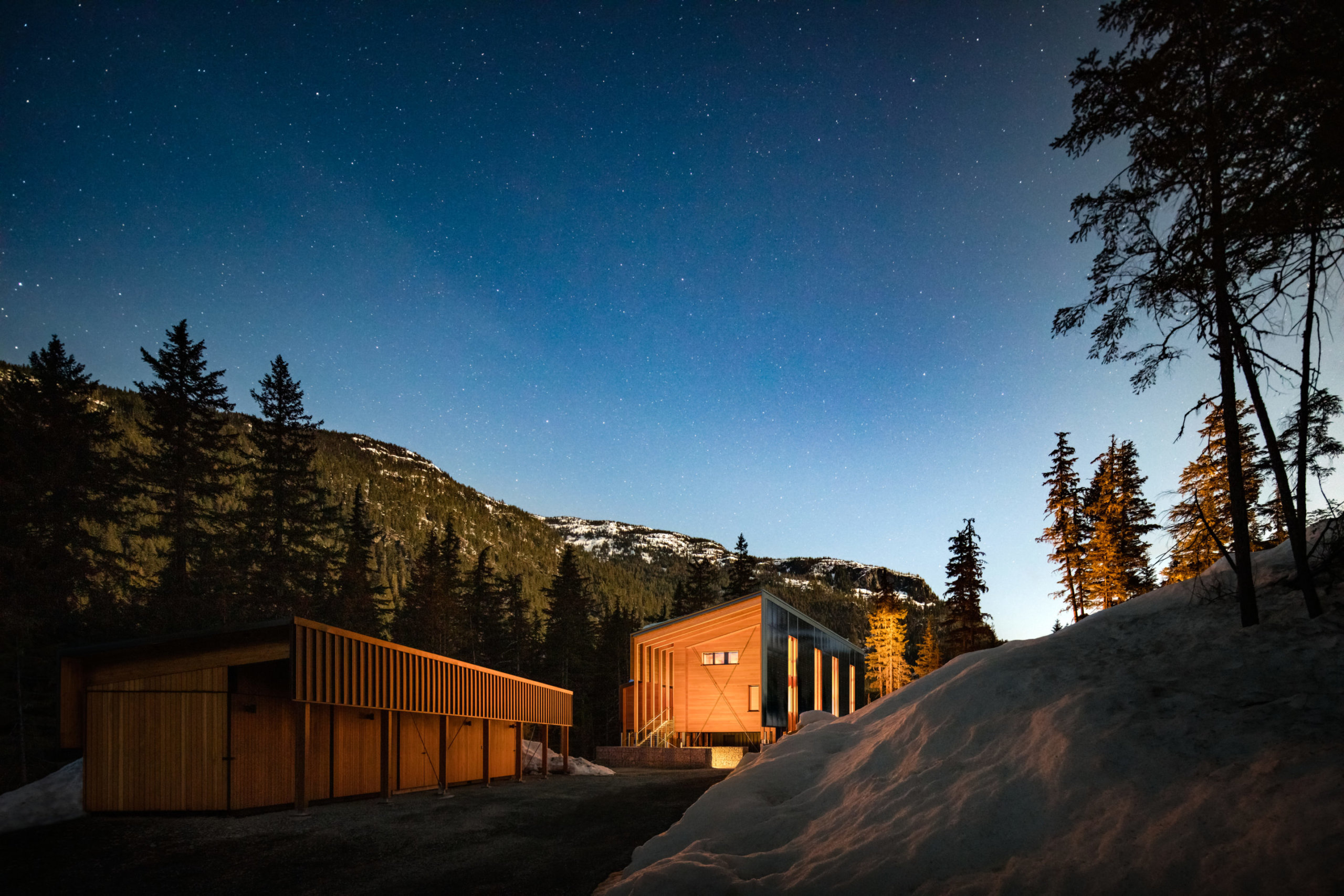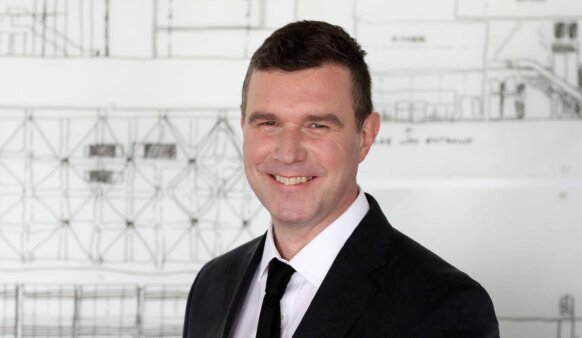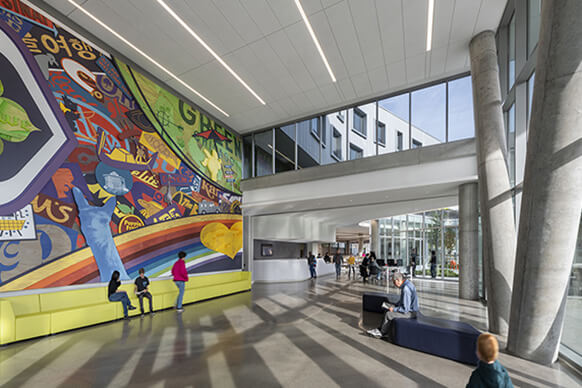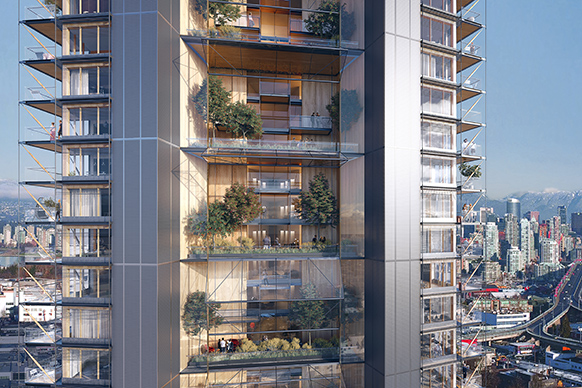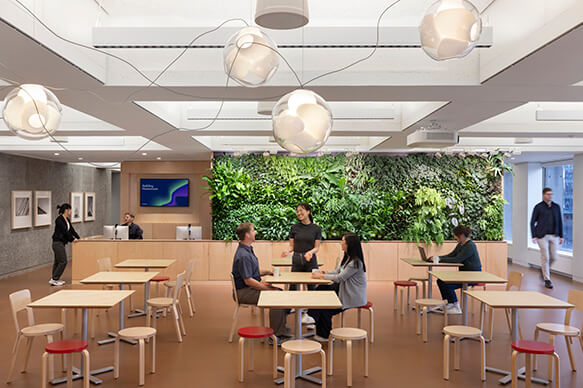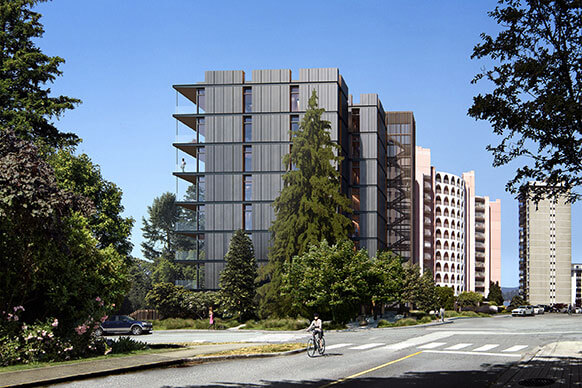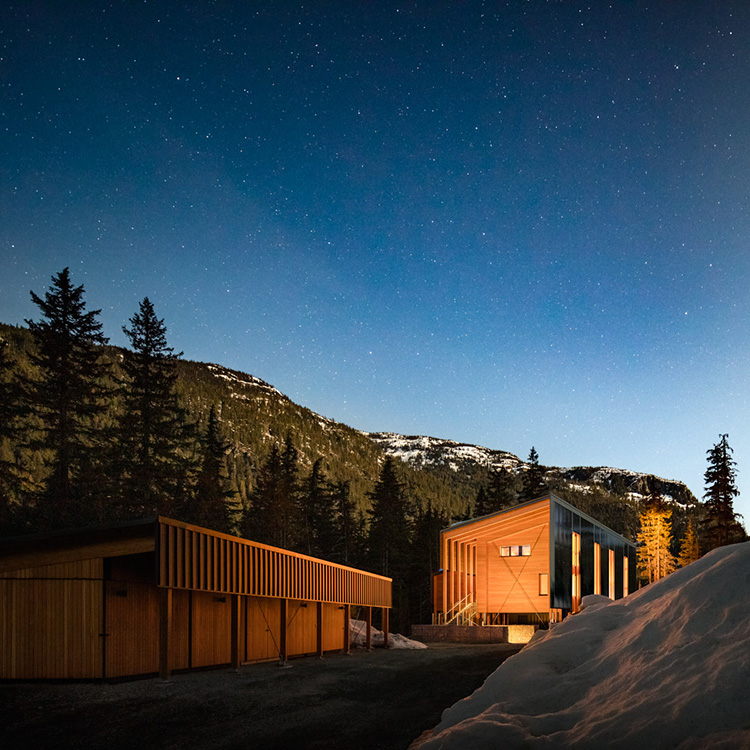
SoLo
Sitting lightly upon a forested knoll overlooking the spectacular Soo Valley north of Whistler in British Columbia’s Coast Mountains, SoLo is not a typical alpine home. With Delta Land Development’s intention to pioneer a future zero emissions approach to building, we designed a prototype that demonstrates a unique approach to building off-grid in a remote environment where every choice has consequences.
Challenging conventions in both aesthetics and construction, the prototype acts as a testing ground for low-energy systems, healthy materials, prefabricated and modular construction methods, and independent operations intended to inform the approach to larger projects such as Canada’s Earth Tower. A Passive House certified building, wood was chosen as the primary structural material and is authentically expressed and exposed in its entirety throughout the home—a ‘temple to Douglas fir.’
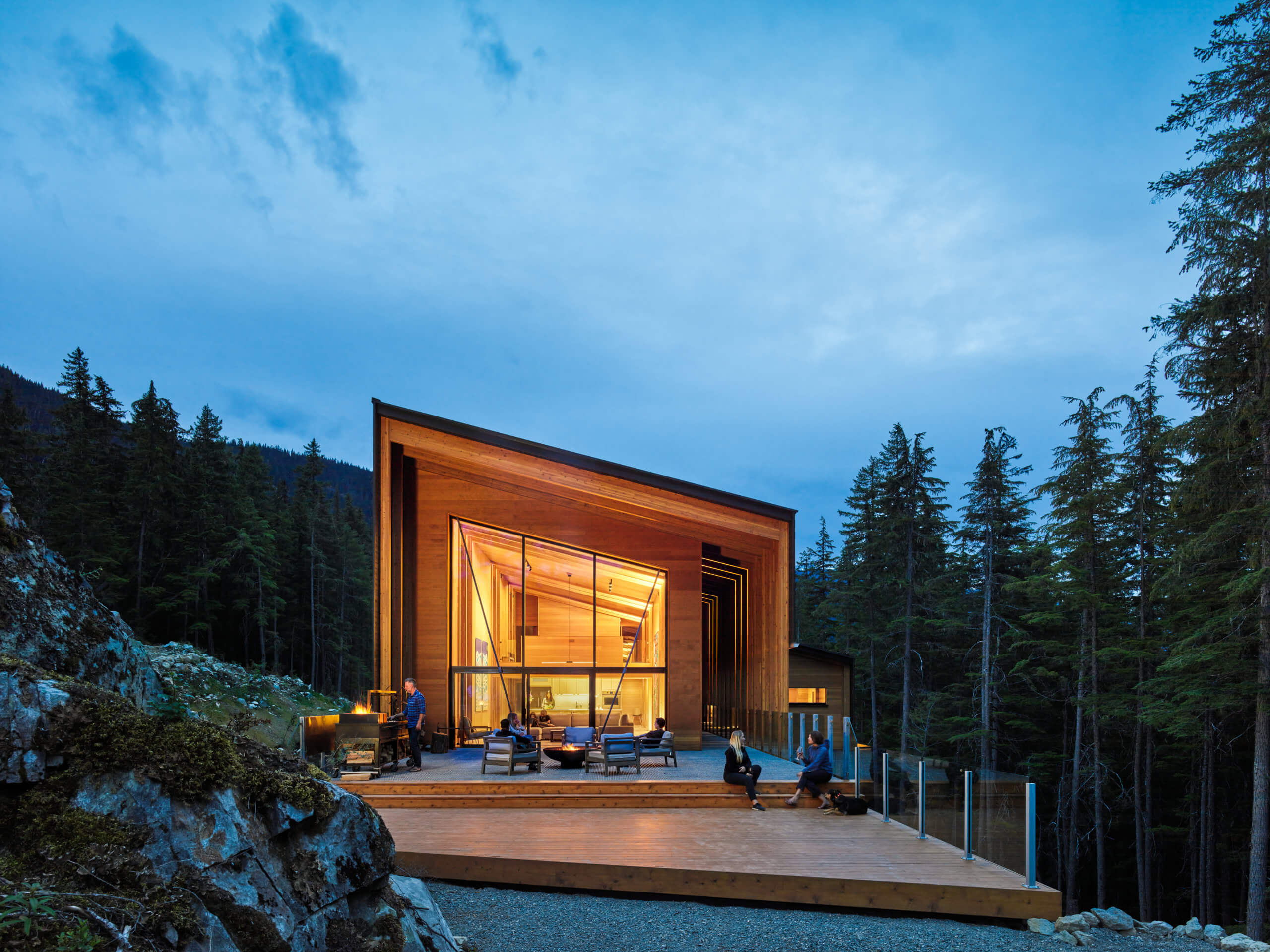
Given the valley’s extreme climate, it was critical to have an ‘enclosure-first’ approach to ensure energy efficiency and outstanding comfort. Employing the Passive House standard, we applied a two-layer approach to the enclosure—an outer heavy timber frame acts as shield, resisting the weather, while the heavily insulated inner layer acts as the thermal barrier. To make certain the house functions with exceptional thermal performance and air tightness, we conducted detailed thermal modeling of each weather condition. With the addition of double height glazing opening the home up to the valley’s incredible views, the home has achieved PHI Low Energy Building certification.
As an ‘off-grid’ home, a number of systems are required for its operational independence. With the goal to eliminate fossil fuels and combustion from its operation, we incorporated a photovoltaic array, geoexchange system, and hydrogen fuel cell as a backup energy storage solution for when there is no winter sun or peak use exceeds battery capacity. Although it reduces efficiency, the site’s topography, along with the snow accumulation in winter, led us to mount the 32kW array vertically on the south façade. Complementing the home’s solar generation, we provided future provision for wind power. The house collects and treats its own drinking water and processes its waste water.
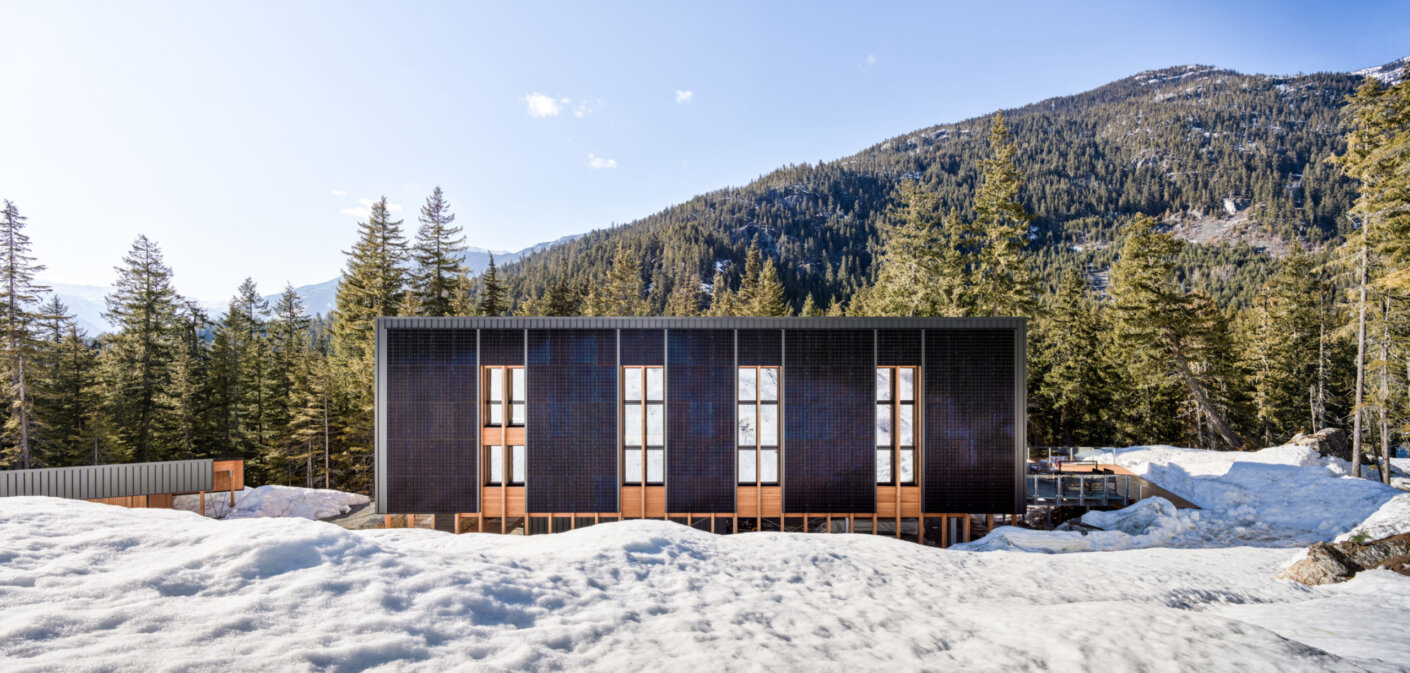
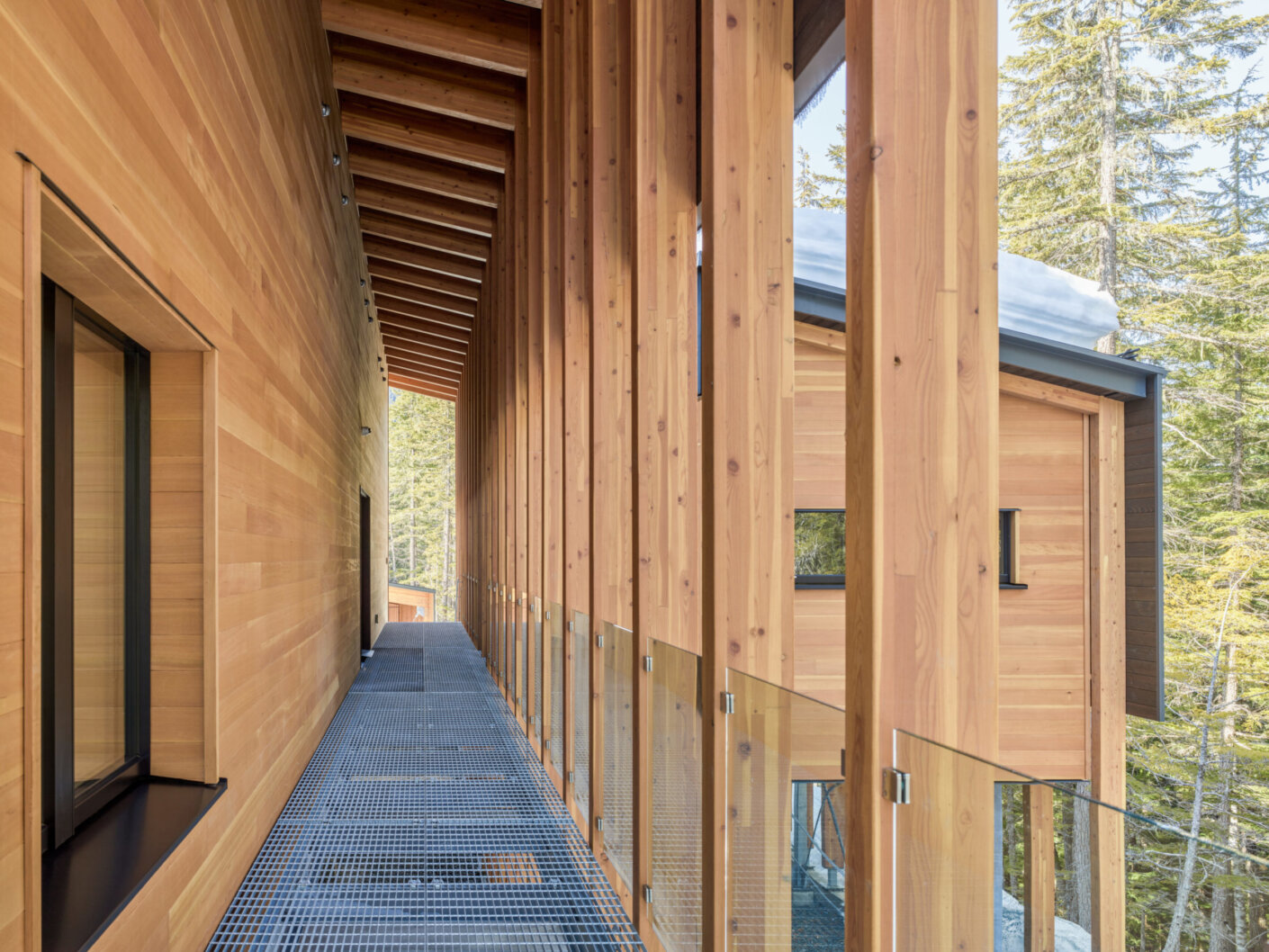
To solve challenges posed by the site’s remote location and seasonal construction window, we commissioned local builders to prefabricate modular building elements off-site. This was essential to allow for a quick erection of the building in the summer season while decreasing the amount of equipment and materials needed to be delivered to the site, reducing the project’s embodied carbon footprint. To minimize site disturbance, we set the modular prefabricated home on a light structure above the uneven terrain, reinforcing its relationship to the site as a ‘visitor,’ allowing nature and the site to remain the focus.
― Kirk Robinson, Senior Vice President, Delta Land Development
Propelled by the project’s remoteness, we designed SoLo to express a distinctive performance-led aesthetic that is deliberately authentic and unsentimental. Focusing on the essential characteristics of the building, the home embodies a simple aesthetic through a restrained material palette and edited architectural features. Unexpected and unique, the interior of the house features only six materials with Douglas fir celebrated throughout as both structure and finish. With a commitment to promote health and well-being, we purposely chose materials that were reviewed against our Precautionary List, rounding out our holistic approach to sustainability by eliminating harmful substances.
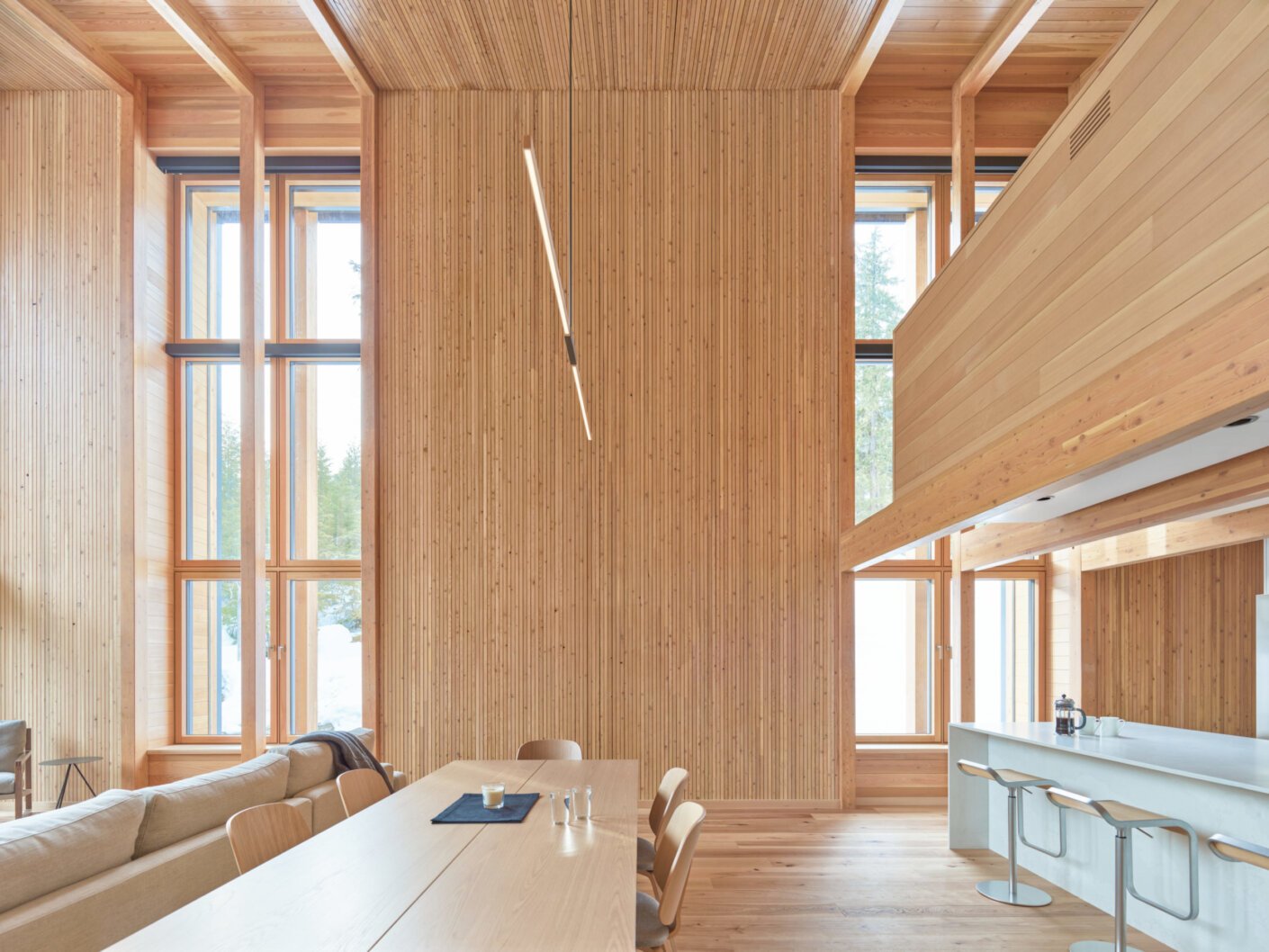
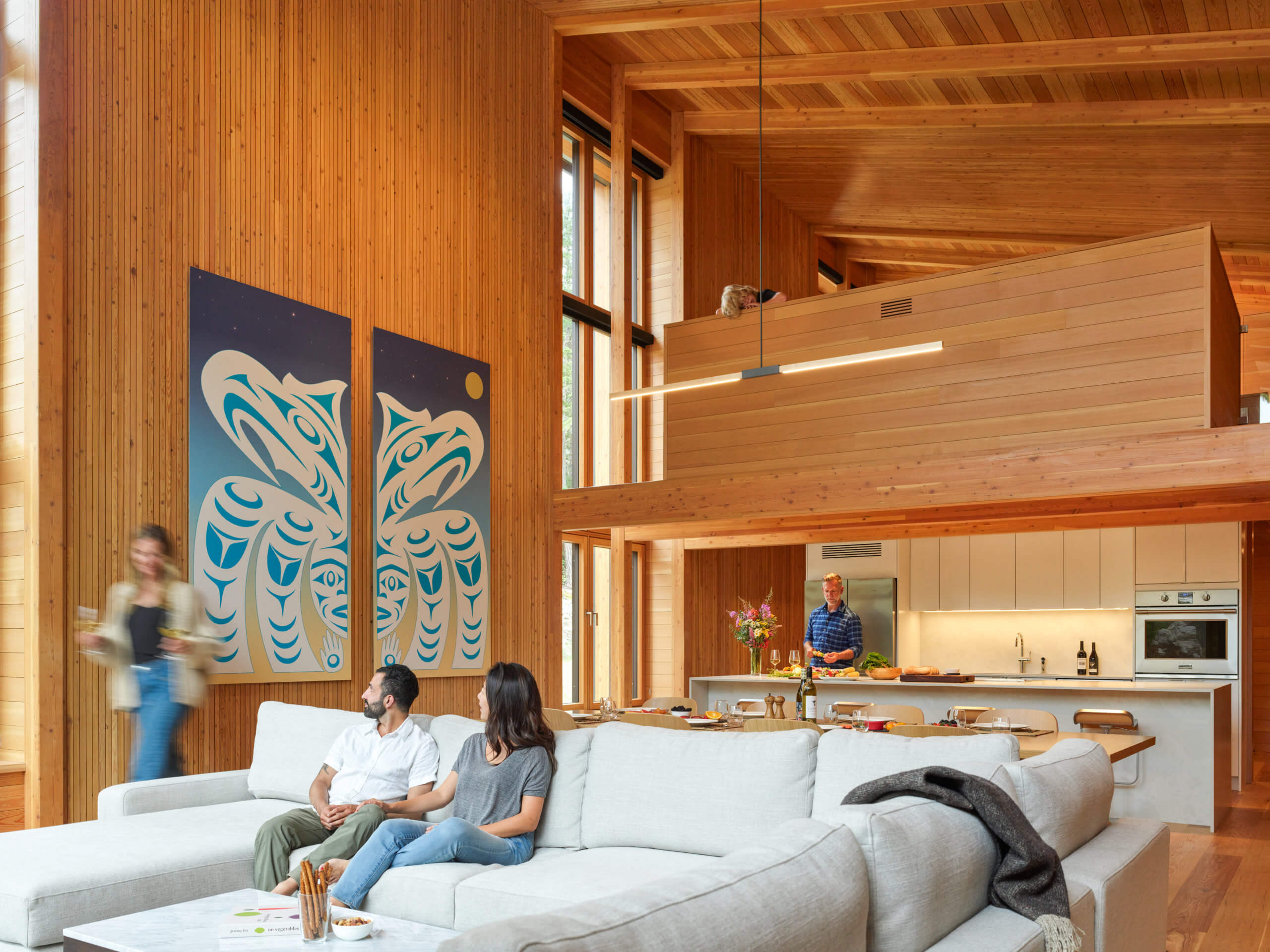
As part of the design process, the detailing of the building prompted a research initiative completed by the Vancouver studio, “Increasing Understanding of the Role of Thermal Bridging in Building Performance and the Design Process.” As a passive house project, the goal is to mitigate energy loss and create outstanding interior comfort through building envelope performance. This study focused on the role of thermal bridging on performance and its mitigation through good detailing. A detailed thermal bridge calculation protocol and workflow was developed and applied to benefit the project.
The house sits between the traditional territories of the Lil’wat and Squamish First Nations, with evidence of occupation in the valley for centuries. Development in the broader region began in the 1970s in the present Resort Municipality of Whistler, beginning as an ‘offgrid’ settlement of avid cross-country skiers, naturalists, and outdoor adventurers. With a historical forestry-based economy, today the popular skiing and hiking area is found amid stands of second growth forest. Contributing to the local economy, we ensured that all timber cleared on the project site fed into the local forest industry.
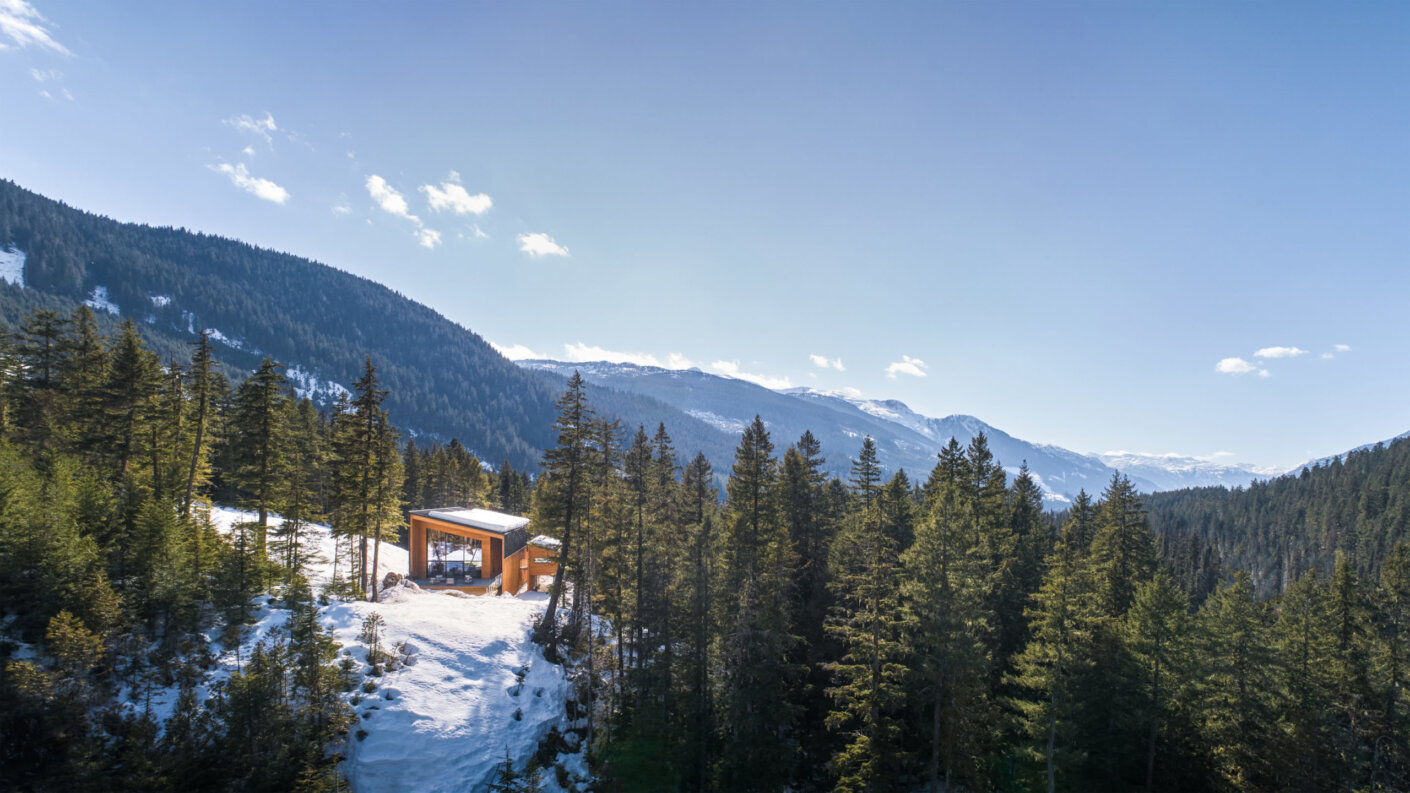
Playing on the project’s remoteness and pioneer mindset, the name SoLo was born.
Located in the Lower Soo Valley, the house sits alone perched on top of a hill, and is going ‘solo’ in paving a new path forward to build differently.
